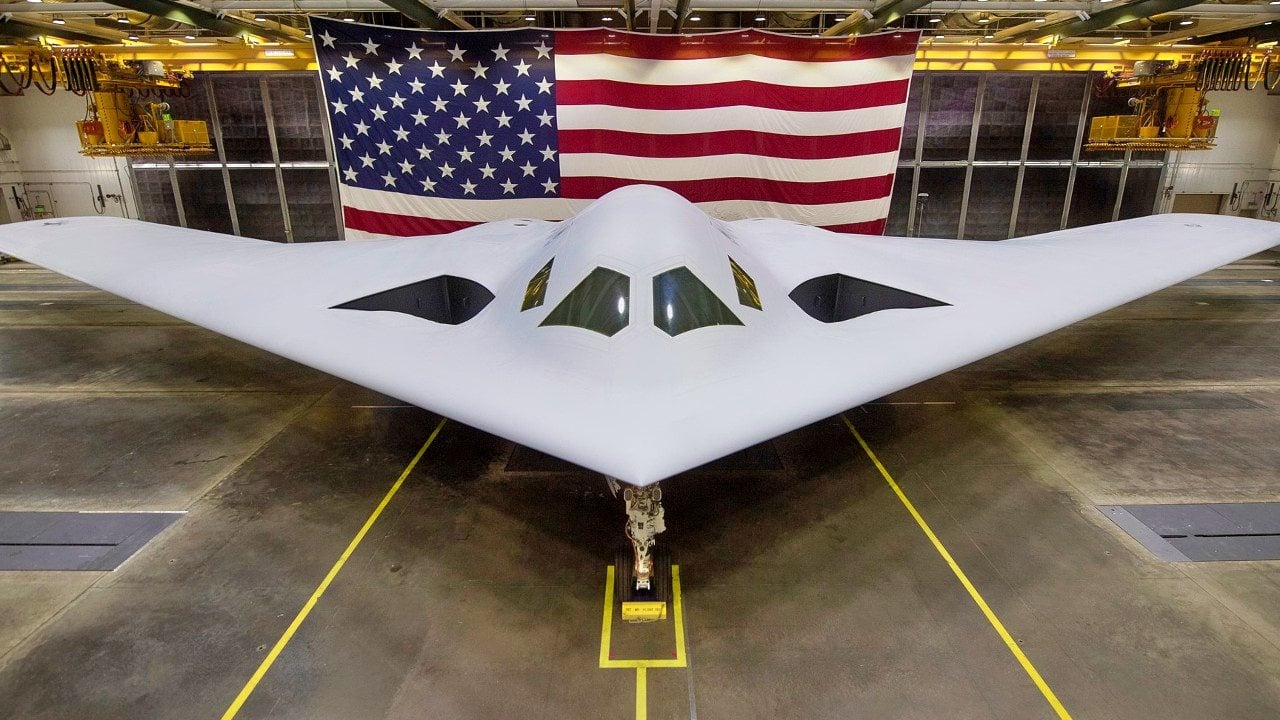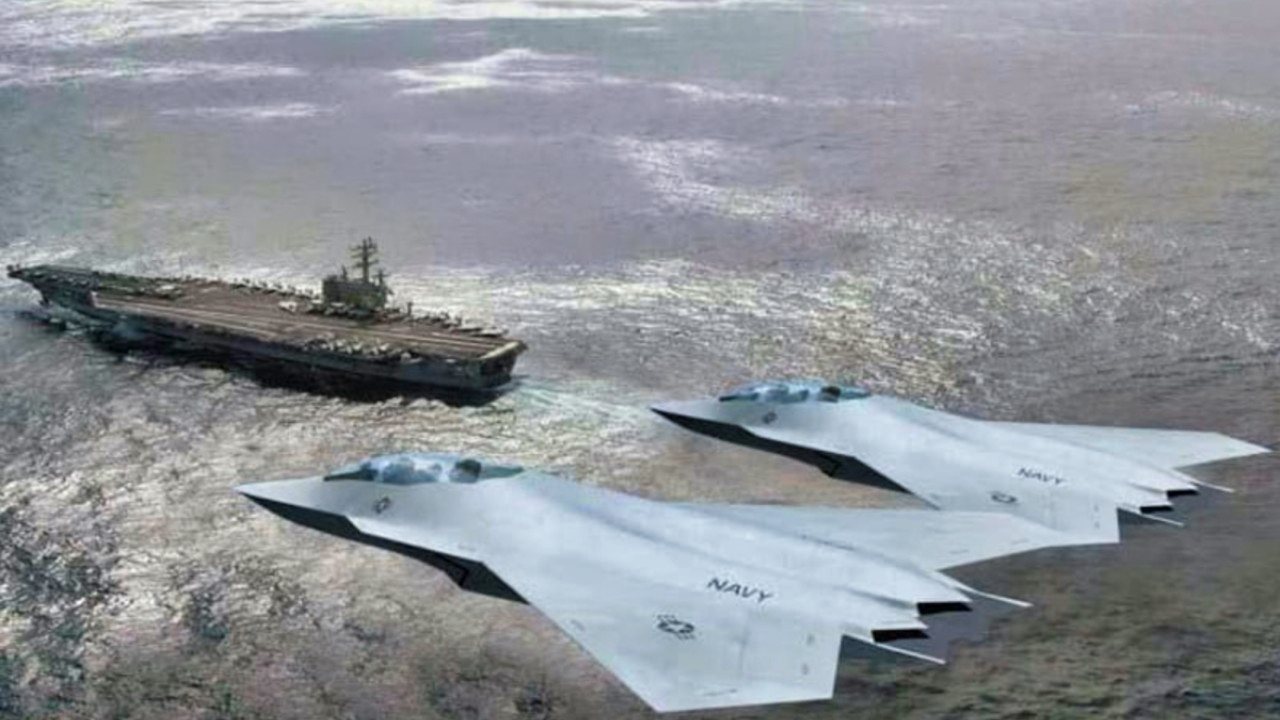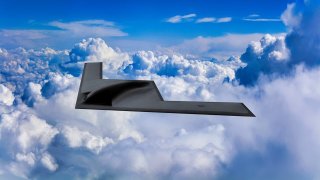The B-21 Raider, F/A-18 Super Hornet and F-15EX Fighter: Just Too Expensive?
The greatest threat to the United States military may not be near-peer adversaries such as Russia and China – rather, it could be the rising cost of the latest military hardware like the B-21 Raider and F-15EX.
Northrop Grumman Set to Lose a Billion Dollars Building the First B-21 Raiders - The greatest threat to the United States military may not be near-peer adversaries such as Russia and China – rather, it could be the rising cost of the latest military hardware.
A point could be made that we're not facing mutually assured destruction in a war with either power, but that we're at risk of mutually assured bankruptcy.
It was in October 2023 that Northrop Grumman announced it would likely lose up to $1.2 billion to produce the B-21 Raider bomber during its low-rate initial production. Due to inflation, labor problems, and lingering supply chain issues – all of which are complicating the production process for the next-generation long-range strategic bomber – the company at best is expecting not to turn any profit at first.
"We are planning at a zero profitability [on the B-21 for now]," Northrop Grumman chief executive Kathy Warden said in an October call with analysts, according to a report from Defense News. "But we have to perform, and we are working hard to ensure that plan is what we achieve."
The aerospace firm reported a quarterly profit of $937 million, up from two percent a year prior – so it isn't completely dire.
B-21 Raider: A Costly Aircraft
The United States Air Force has announced plans to buy at least 100 B-21s, an advanced stealth bomber, which will replace the aging B-1B Lancer and B-2 Spirit bombers now in service. The B-21 will provide the service with new abilities to conduct penetrating deep-strike missions, and the aircraft will be able to carry both conventional and nuclear weapons – but it will also be one of the most expensive aircraft ever built, and the service certainly won't want to lose any.
Though the price has been classified, each aircraft could cost upwards of $750 million, and that's only if the costs are spread out to a full 100.

This is a lesson the Air Force learned all too well more than 15 years ago.
It has been reported that the B-2 Spirit named "Spirit of Kansas" that crashed in 2008 at Andersen Air Force Base saw the complete loss of the stealth aircraft as it flipped and caught fire. The total price tag of the accident was $1.4 billion!
The F/A-18 is Getting Too Expensive
It isn't just the latest and greatest aircraft that are becoming so expensive. As previously reported, the United States Navy has been at a standstill in negotiations with Boeing over the final F/A-18 E/F Super Hornets. Previous estimates put the unit cost of the final batch of aircraft at $55.7 million, and lawmakers on Capitol Hill authorized about $1.15 billion for the aircraft. The math added up to the 20 aircraft – but then like everything else, the price went up, way up.

Boeing's estimate for the Super Hornets came in much higher, almost to the point that it was approaching the cost of the Lockheed Martin F-35C, the aircraft carrier variant of the Lightning II. According to a report from Breaking Defense in October, Lots 15 to 17 – the latest of the F-35C – had a reported cost of $102.1 million per aircraft.
Boeing, which was locked into a handful of contracts that forced the company to take a loss when technology development went over budget, saw significant losses last year, Reuters reported in October.
The F-15EX Costs As Much as the F-35
The story is similar to Boeing's F-15EX, as its price tag has also gone up, and it has a higher price tag than the fifth-generation Lockheed Martin F-35 Lightning II. The per-plane cost for the F-15EX Eagle II in Lot 3 is expected to be as high as $97 million and $94 million for Lot 4.

The F-35 Joint Program Office spokesman Russ Goemaere also told Breaking Defense in October that the United States Air Force's variant of the stealth fighter – the conventional takeoff and landing F-35A – currently has an "average" flyaway cost of $82.5 million for the jet's 15th, 16th and 17th production lots, which will be delivered in calendar years 2023, 2024 and 2025 respectively.
Indeed, the average flyaway price for the vertical takeoff and landing F-35B is $109 million, while the carrier-launched F-35C has a flyaway price of $102.1 million for lots 15-17, but neither variant is used by the Air Force.
The Future of Aircraft Development
It was also reported in July that Northrop Grumman had announced that it won't compete to be the prime contractor for the United States Air Force's Next-Generation Air Dominance (NGAD) fighter program – yet, it could still bid on the U.S. Navy's F/A-XX or Air Force's Collaborative Combat Aircraft programs.

As it stands, only Boeing and Lockheed Martin now build fighters for the Air Force. While these companies are still giants in the military aerospace sector, a question should be asked if they can afford to lose money building the aircraft. And if they opt to exit the market, what does that mean for the future of the Air Force and Navy?
And this doesn't even address the costs of the U.S. Navy's aircraft carriers – which are the most expensive military platforms ever built!
Author Experience and Expertise
Peter Suciu is a Michigan-based writer. He has contributed to more than four dozen magazines, newspapers, and websites with over 3,200 published pieces over a twenty-year career in journalism. He regularly writes about military hardware, firearms history, cybersecurity, politics, and international affairs. Peter is also a Contributing Writer for Forbes and Clearance Jobs. You can follow him on Twitter: @PeterSuciu.
Images are sourced from both Shutterstock and Creative Commons.

